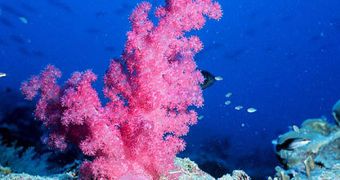Biologists have recently identified a very concerning trend among coral reefs. It would appear that the organisms prefer to develop in a northward direction, rather than continue to grow on their usual grounds. This change could be a response to global warming, scientists say.
All over the world, ocean temperatures are rising constantly, as is the level of acidity the waters have. This is caused be a variety of factors, chiefly among which is human-induced pollution.
The massive amounts of greenhouse gases – including methane and carbon dioxide – we put in the atmosphere each year are having a disastrous effect on the oceans and its habitats. Corals are especially vulnerable to external influences.
In the Pacific Ocean, the team behind the new study, which was led by geographer Hiroya Yamano from the National Institute for Environmental Studies, in Tsukuba, Japan, discovered that coral reefs would rather move north in order to survive than stay put.
This type of trend has been observed on land too, where species accustomed to living at certain altitudes now move higher up in hills and mountains, in order to find the temperature ranges they evolved to thrive in.
In the new investigation, the experts looked at reefs spread around Japan, and analyzed their evolution and movement patterns over the past 80 years, Science News reports.
The main conclusion was that the organisms now avoid the subtropical environments where they once thrived, and instead move towards temperate climate zones.
According to a paper accepted for publication in an upcoming issue of the esteemed scientific journal Geophysical Research Letters, the new research is the first to cover so many latitude lines over so many decades. The first coral maps the experts had access to dated from the 1930s.
Some of the coral species that made the object of the investigation were found to move northwards at very high speeds, sometimes as fast as 8.7 miles per year. On average, animals living on land tend to migrate only 0.4 miles per year.
“The good thing about this study, they didn’t just tell us what moved, but what didn’t move,” explains John Pandolfi, who holds an appointment as a marine biologist at the University of Queensland, in Brisbane, Australia.
The Japanese researchers analyzed 9 common coral species, and found that 4 were heading northwards, whereas two had already made it to temperate waters. The fastest-moving corals covered nearly 700 miles in 80 years, the Japanese researchers conclude.

 14 DAY TRIAL //
14 DAY TRIAL //